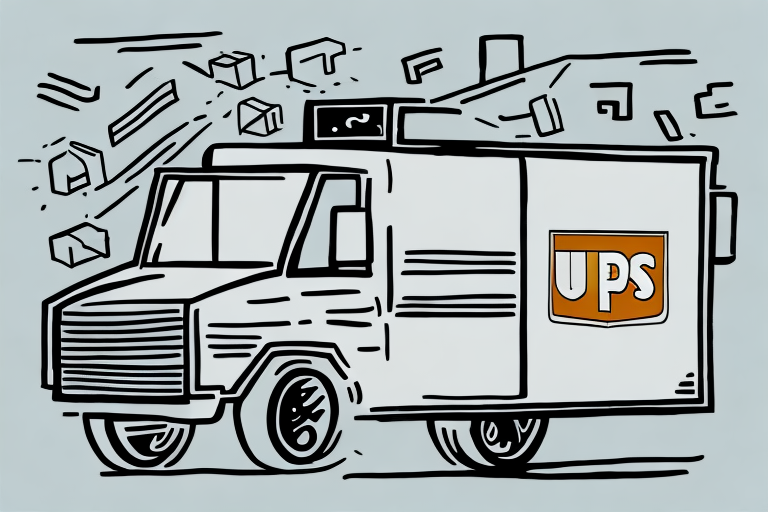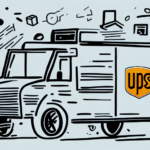Comprehensive Guide to UPS Insurance Coverage
Shipping valuable items with UPS requires understanding the available insurance options to protect your shipments against loss or damage. UPS offers various insurance policies tailored to different needs, each with specific coverage limits and conditions. This guide provides an in-depth analysis of UPS insurance, helping you make informed decisions to safeguard your valuable shipments.
Why Choose UPS Insurance?
UPS insurance provides peace of mind by ensuring that your valuable items are protected during transit. Whether you're an individual sending a precious heirloom or a business shipping high-value products, understanding UPS's insurance options can help mitigate financial risks associated with shipping.
Types of UPS Insurance Coverage
1. Declared Value Coverage
Declared Value is the most basic form of insurance UPS offers. It automatically applies to packages valued under $100, covering the shipment's value in case of loss or damage.
- Standard Coverage: Automatically included for shipments valued up to $100.
- Additional Coverage: For items valued above $100, shippers can declare a higher value for an additional fee.
According to UPS, Declared Value coverage ensures that even if a package is lost or damaged, you receive compensation up to the declared amount, enhancing the security of your shipments.
2. UPS Proactive Response Secure
UPS Proactive Response Secure is a premium insurance option designed for high-value and time-sensitive shipments. This service includes:
- Real-time monitoring of your shipment’s location.
- Enhanced security measures during transit.
- Immediate response to any issues or delays.
This option is ideal for businesses that require reliable and expedited handling of valuable items, ensuring timely and secure deliveries.
3. UPS WorldShip Insurance
UPS WorldShip Insurance is an add-on feature available through the UPS WorldShip software, catering primarily to businesses with frequent shipping needs. It offers:
- Streamlined insurance purchasing directly within the shipping software.
- Customizable coverage options based on shipment volume and value.
This feature is beneficial for businesses seeking efficiency and flexibility in managing their shipping insurance.
How to Purchase UPS Insurance
At the Time of Shipping
When preparing your shipment, you can declare the value of your items and select the appropriate insurance policy. UPS provides an option to add insurance during the shipping process, allowing you to choose the coverage that best fits your needs.
After Shipping
If you need to purchase additional insurance after your shipment has been sent, UPS allows for retroactive coverage. However, this may involve additional steps and could result in higher premiums.
It's crucial to review the terms and conditions of each insurance policy to understand the coverage limits and any exclusions that may apply.
Determining the Value of Your Shipment
Declared Value vs. Actual Value
The declared value is the amount you state as the shipment's value, which UPS uses to determine the coverage level. It's important to accurately declare your shipment's value to avoid underinsurance. If the declared value exceeds the actual value, you may incur higher shipping costs. Conversely, under-declaring can result in insufficient compensation in the event of loss or damage.
Limitations on Coverage
UPS imposes certain limitations on coverage based on the type of items being shipped. For example, items like jewelry, antiques, and artwork may have specific coverage requirements or exclusions. Always verify whether your items are eligible for coverage under the chosen insurance policy.
Coverage Inclusions and Exclusions
What is Covered
- Loss or damage during transit.
- Compensation up to the declared value of the shipment.
- Coverage for a wide range of items, excluding specific high-risk categories.
What is Not Covered
- Cash and currency.
- Perishable goods.
- Hazardous materials.
- Items prohibited by law, such as illegal substances.
- Damage resulting from improper packaging or handling.
Understanding these exclusions is vital to ensure that your shipment is fully covered and complies with UPS policies.
Filing a Claim with UPS
Steps to File a Claim
- Report the loss or damage to UPS as soon as possible, ideally within 60 days of the shipment date.
- Provide detailed information about the shipment, including the tracking number, declared value, and nature of the items.
- Submit any required documentation, such as proof of value, photos of the damage, and any relevant receipts.
Claim Processing
UPS will investigate the claim, which may include inspecting the damaged package and its contents. Once the claim is approved, UPS will issue a settlement based on the declared value, up to the coverage limit.
Tips for a Successful Claim
- Document the condition of the package upon arrival.
- Keep all receipts and proof of the item's value.
- Follow UPS's claim procedures meticulously to avoid delays.
Preventing Package Damage During Shipping
Proper Packaging Techniques
Using high-quality packaging materials is essential to protect your items. Consider the following tips:
- Use sturdy, double-walled boxes for added protection.
- Wrap items individually with bubble wrap or foam.
- Fill empty spaces with packing peanuts or air pillows to prevent movement.
Clear Labeling
Label your packages with clear instructions to ensure careful handling. Use labels such as "Fragile," "This Side Up," and "Handle with Care" to communicate the package's needs effectively.
Choosing the Right Shipping Method
Select a shipping method that aligns with the nature of your items. For delicate or high-value items, expedited shipping options may reduce transit time and minimize exposure to potential damage.
Additional Protection Strategies
Tracking and Monitoring
Utilize UPS's tracking tools to monitor your shipment's progress in real-time. This proactive approach allows you to address any issues promptly, ensuring that your package remains secure throughout transit.
Enhanced Security Options
Consider subscribing to enhanced security services like UPS Proactive Response Secure, which offers additional protections and monitoring for high-value shipments.
Third-Party Insurance Options
While UPS provides robust insurance coverage, exploring third-party insurance options can offer alternative or supplementary protection. Compare policies to find coverage that best suits your specific shipping needs.
Comparing UPS Insurance to Other Shipping Insurance Providers
Evaluating Insurance Providers
When selecting shipping insurance, it's important to compare UPS's offerings with other providers. Factors to consider include:
- Coverage limits and exclusions.
- Claim processing efficiency.
- Cost and value for money.
- Customer reviews and reputation.
Benefits of Choosing UPS Insurance
UPS insurance is integrated seamlessly with their shipping services, providing convenience and reliability. With a global presence and extensive logistics network, UPS ensures that your shipments are handled with care and professionalism.
When to Consider Third-Party Insurance
For shipments that require specialized coverage or higher limits than what UPS offers, third-party insurance providers may offer more tailored solutions. Assess your specific needs to determine the best insurance strategy for your shipments.
Conclusion
Choosing the right UPS insurance policy is crucial for protecting your valuable shipments against potential risks during transit. By understanding the various insurance options, coverage limits, and claim processes, you can make informed decisions that ensure the safety and security of your packages.
Always assess the value of your items, review UPS's terms and conditions, and consider additional protection strategies to enhance your shipping experience. With the right insurance coverage and preventive measures, you can ship with confidence, knowing that your valuable items are well-protected.








